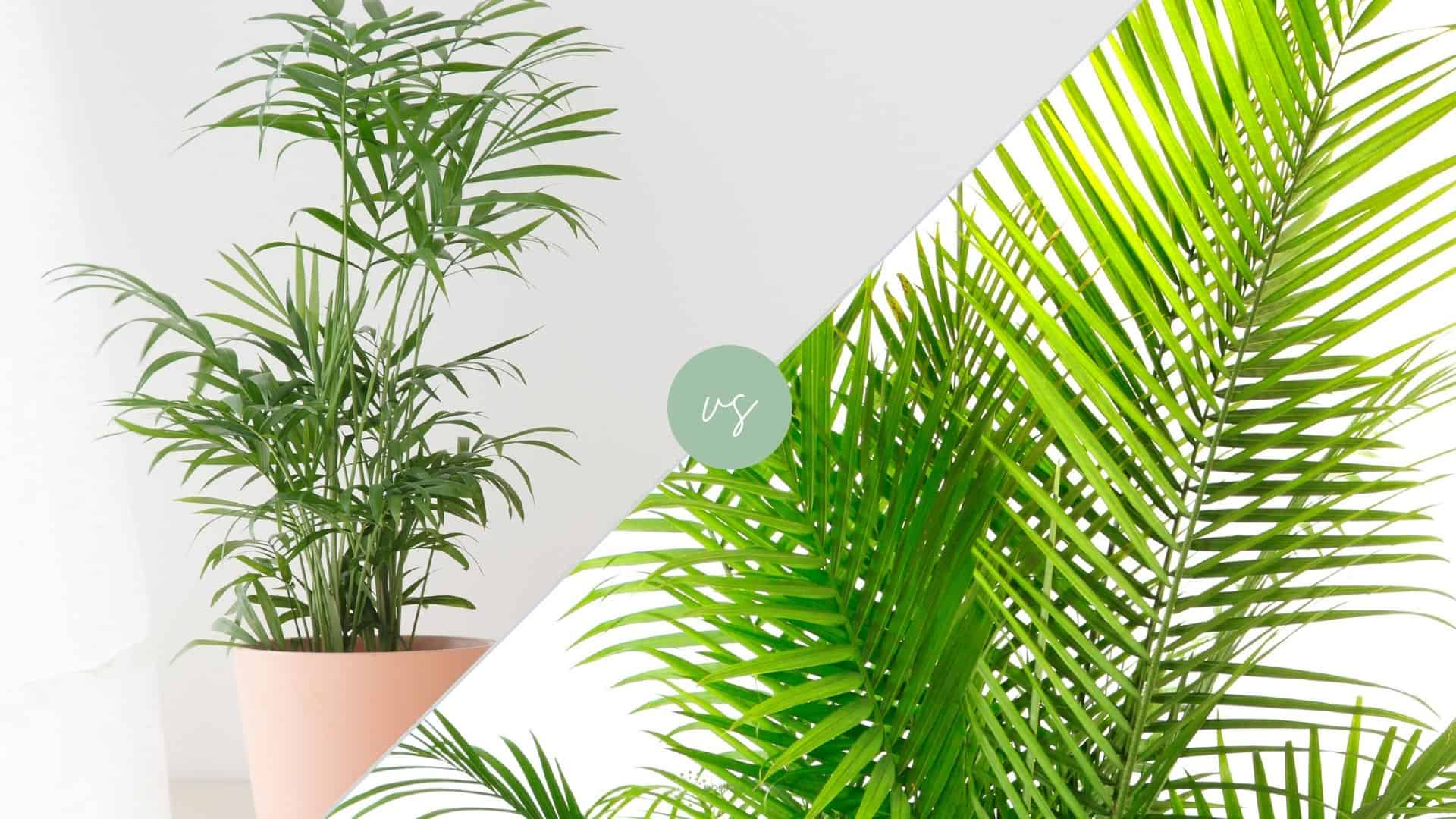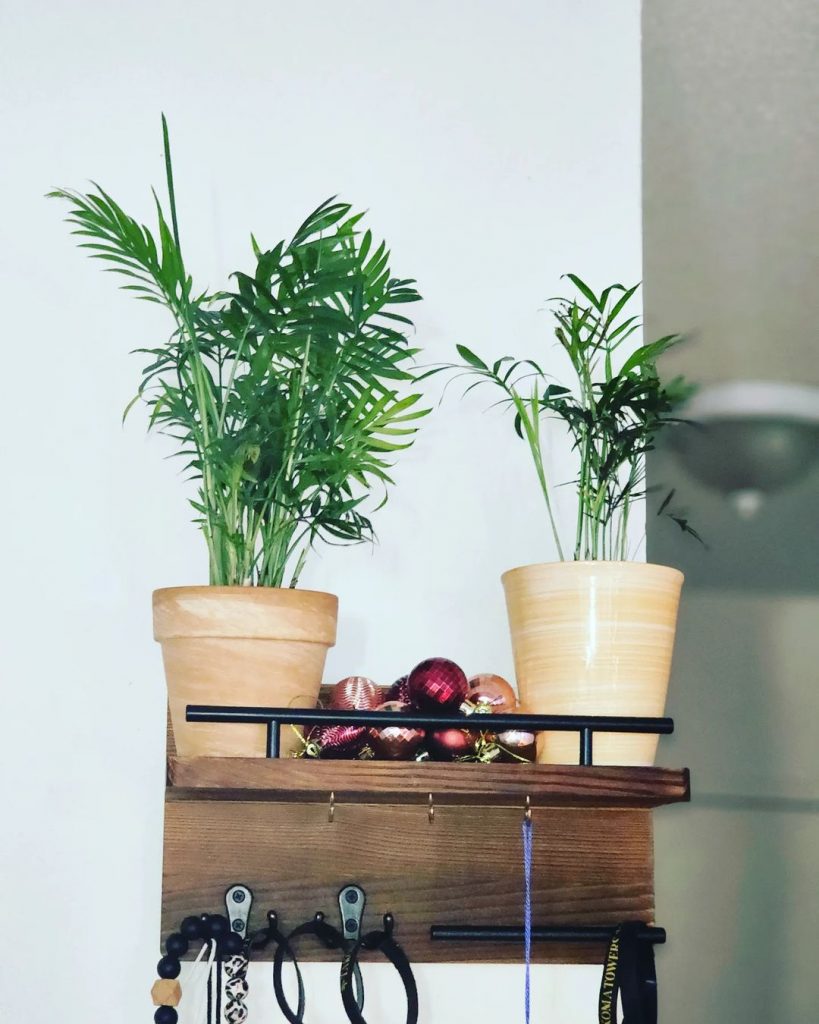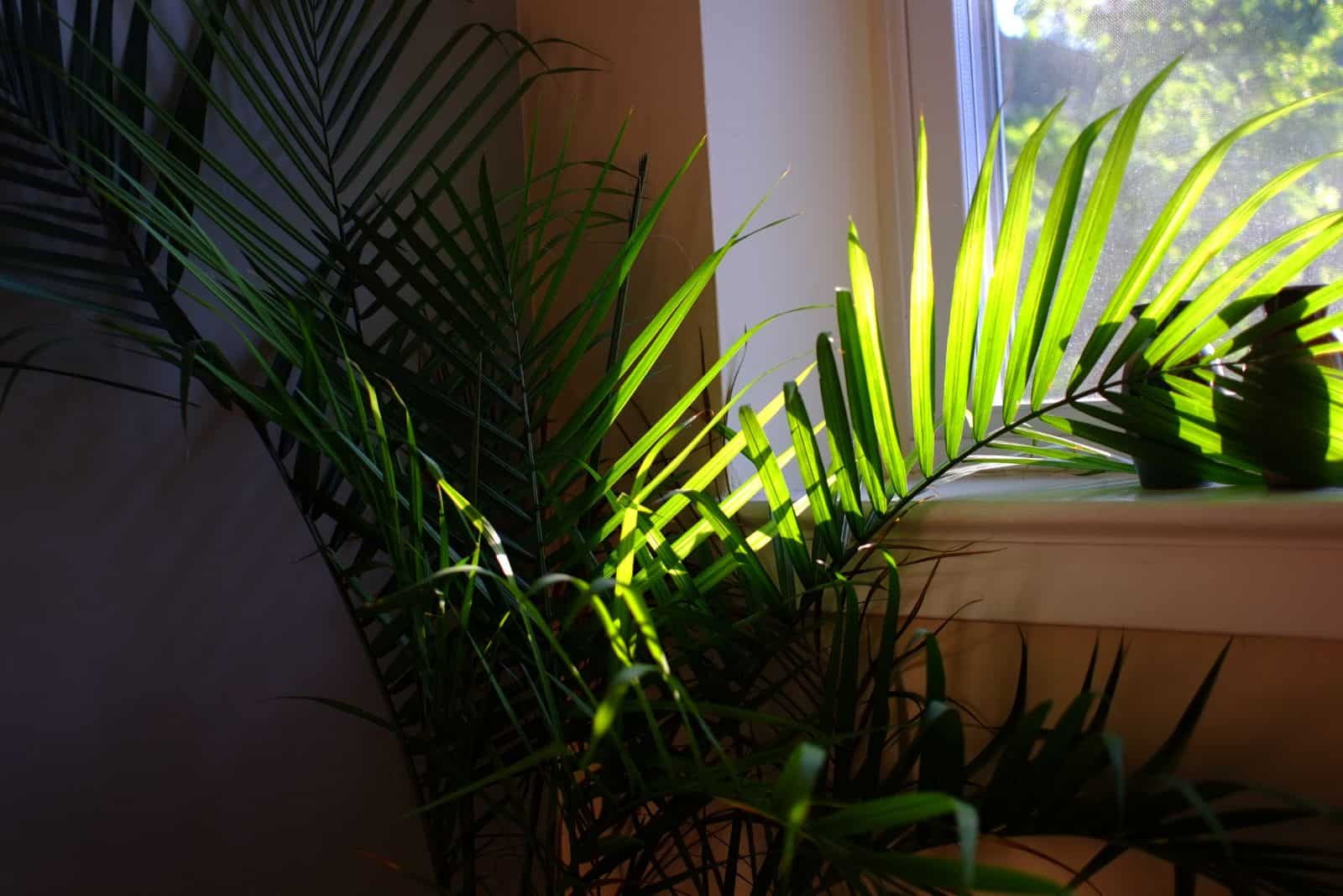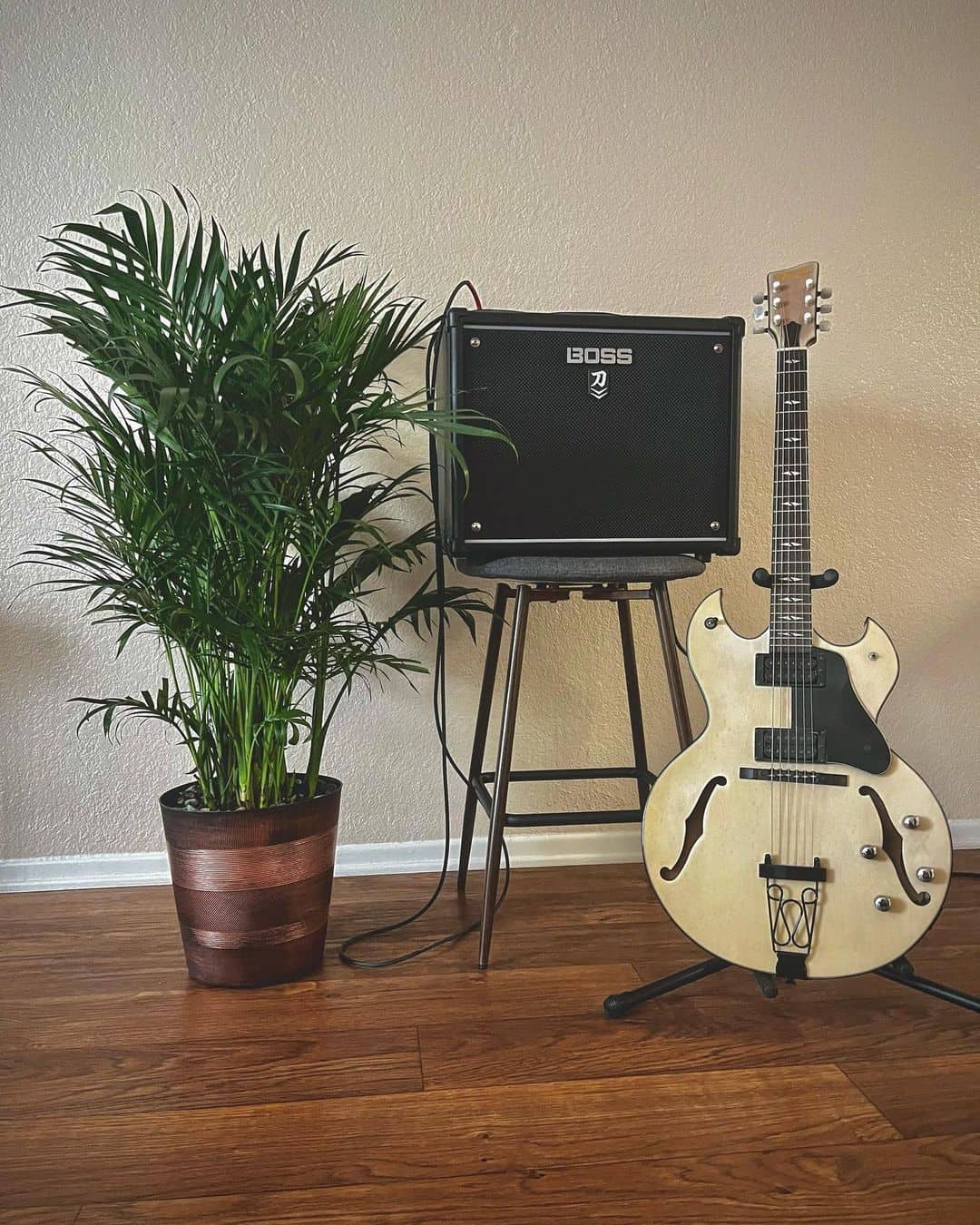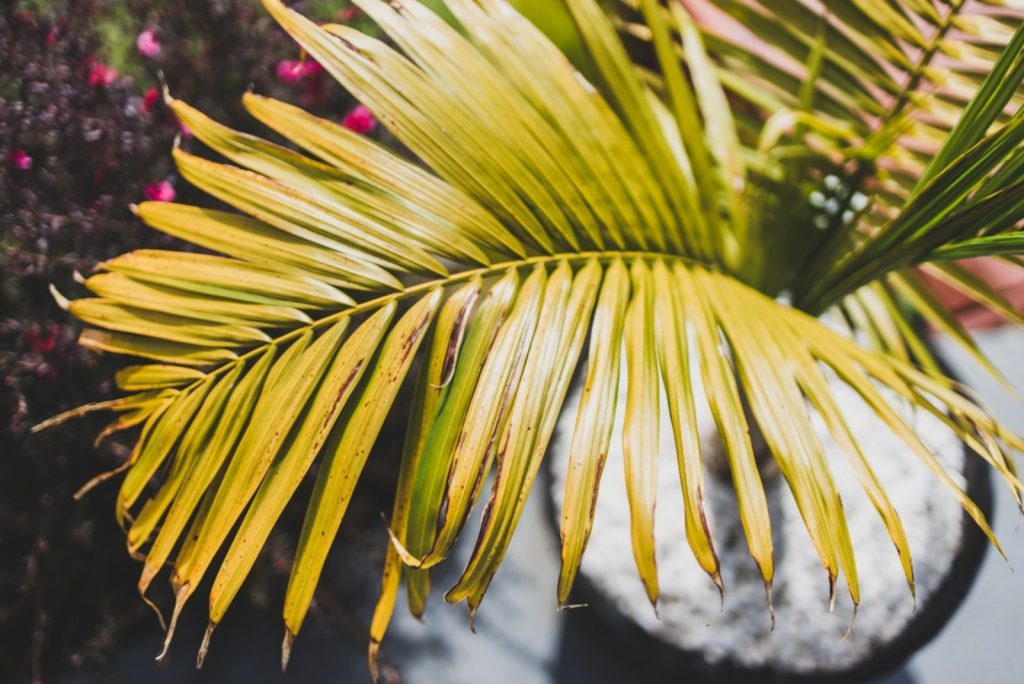Palms add a tropical vibe to apartments better than any other plant, but it can be challenging to differentiate between certain species because of their appearance.
The best example is a resemblance between the cat palm and majesty palm, which are two separate species with slight differences in looks and huge differences in care requirements.
I’ll compare these species to help you differentiate between them and decide which one is better for you.
Before I start, here’s a table showing the taxonomic features of these palms.
| Cat palm | Majesty palm | |
|---|---|---|
| Family | Arecaceae | Arecaceae |
| Genus | Chamaedorea | Ravenea |
| Scientific name | Chamaedorea cataractarum | Ravenea rivularis |
Cat Palm Has Softer And Smaller Leaves
You can notice the difference in the texture of the leaves if you touch them.
When majesty palm plants enter their mature growth stage, the leaves become rough. On the other hand, the leaves of the Chamaedorea cataractarum palm will be softer.
When it comes to size, the leaves of the mature indoor cat palm are about a foot smaller. The difference is more noticeable in the natural habitat of these plants.
Majesty palms develop leaves that are approximately 8 feet long, whereas the leaves of the cat palm typically don’t exceed 1 foot.
Majesty Palm Takes Up More Space
It’s completely understandable that growers consider size as one of the main factors when choosing a new plant.
If you live in a large apartment and don’t mind if a plant reaches more than 10 feet tall, then the majesty palm is a better choice.
The majesty palm gets enormous in its natural habitat, and the average size of a mature plant is about 90 feet. Indoors, you can expect this palm species to reach a minimum of 10 feet.
My majesty palm is 9 feet tall and it seems like it won’t stop growing any time soon! These palms take approximately 10 to 15 years to reach maturity, and my majesty palm is 8 years old.
Be aware that all growing conditions need to be perfect for the majesty palm to reach maturity.
The cat palm is a better choice for smaller apartments since its mature size won’t exceed 6 feet in most cases.
Cat Palm Needs Less Water
One of the most important things for beginner palm growers is learning how to water these plants. Both palms thrive in moist soil, so watering whenever the soil feels dry is necessary.
Cat palms are a forgiving plant and won’t die if you skip one or two waterings. Yellowing is the most frequent sign of lack of water in these palms, but as soon as you give your palm a good soak it will get back on track.
Majesty palms won’t withstand dry soil even for short periods. If you don’t water them exactly on schedule, the lower leaves will start to fall off.
It will be just a matter of days before the leaves of an underwatered majesty palm start yellowing, browning, and withering.
Majesty Palm Needs More Humidity
Both of these tropical beauties thrive in humid environments, and the recommended humidity level is over 50%.
The Majesty palm is a real drama queen when it comes to humidity. If you decide to grow one, you should never keep it in a room with humidity levels below 50%. The fronds will soon start to turn brown and become crispy, and your majesty palm will look like it’s dying.
For all majesty palm growers, I highly recommend using humidifiers for monitoring and raising humidity.
The Cat palm does perform best in high humidity, but won’t display changes if air moisture is slightly lower.
If your cat palm develops brown fronds due to humidity, you can try natural methods such as putting a pebble tray below the pot, misting, or grouping all your plants together to form a microclimate.
Cat Palm Needs Less Light
Chamaedorea species, including the cataractarum, thrive in bright indirect sunlight. You’ll get the healthiest palm if you place it near windows with western or eastern exposure.
The Majesty palm, on the other hand, needs a lot of bright light, but it shouldn’t be direct as it could quickly develop brown tips.
A spot near a south-facing window is the best place for a majesty palm plant. If intense sun rays reach the fronds, they’ll turn brown. Putting sheer curtains over the window will prevent fronds from getting sunburned.
Majesty Palm Is More Susceptible To Pests
When grown as indoor plants, both palms can suffer from pest infestations. Spider mites are one of the most common pests that affect indoor palms.
Spider mite infestations in cat palms can occur, but will happen more frequently in majesty palms.
Spider mites thrive in dry settings, and majesty palms become weak when humidity is low. Since pests prefer weak plants, your majesty palm can get infested quickly if conditions aren’t ideal.
Cat Palm Thrives In Various pH Levels
Beginner growers often struggle with maintaining the necessary pH levels. Cat palms aren’t finicky about pH and they’ll be happy as long as the pH is anywhere between 6.1 and 7.5.
Unlike the cat palm, the majesty palm doesn’t respond well to neutral pH. This palm will grow best if the pH is between 5.0 and 6.0 (slightly acidic).
Since the wrong pH level is one of the main reasons for a dying palm, make sure to monitor it closely.
And The Winner Is…
Before I announce the winner, I must say that both palms make an excellent addition to any home. These are pet–friendly plants (1) that remove harmful VOC substances from the air. (2)
Since maintenance plays a major role in choosing plants, the cat palm is the winner. This is a perfect plant for beginner growers because it’s highly adaptable to indoor conditions and it isn’t easily stressed.
Majesty palms are undoubtedly a beautiful species, but demanding when it comes to maintenance. Conditions need to be perfect all the time, so this palm is more suitable for experienced growers.
Good luck and until next time!
References
1. American Society for the Prevention of Cruelty to Animals [ASPCA], 2019
2. Teiri, H., Pourzamani, H., & Hajizadeh, Y. (2018). Phytoremediation of VOCs from indoor air by ornamental potted plants: A pilot study using a palm species under the controlled environment. Chemosphere

